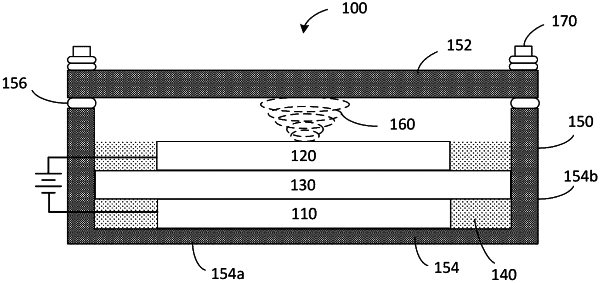| CPC H01M 10/0561 (2013.01) [H01M 4/134 (2013.01); H01M 10/443 (2013.01); H01M 2004/028 (2013.01); H01M 2300/0057 (2013.01)] | 16 Claims |

|
1. A rechargeable battery, comprising:
a cathode comprising NiyFe1-y and NiyFe1-yX2, where 0≤y≤1;
an anode comprising Al and MX deposited onto an aluminum current collector;
a porous separator positioned between the cathode and the anode; and
an electrolyte comprising MAlX4, the porous separator impregnated with the electrolyte such that pores of the porous separator are filled with the electrolyte; and
greater than 0 mol % and up to 10 mol % sulfur relative to moles of NiyFe1-y in the cathode, wherein after 2-5 cycles, the sulfur is present as oxidized sulfur species,
wherein M is Na, Li, K, or a combination thereof, and X is CI, Br, I, or a combination thereof,
wherein the anode comprises 50 mol % to 130 mol % MX relative to moles of NiyFe1-y in the cathode, and
wherein the electrolyte is a molten salt electrolyte that is a solid at temperatures less than 50° C.
|